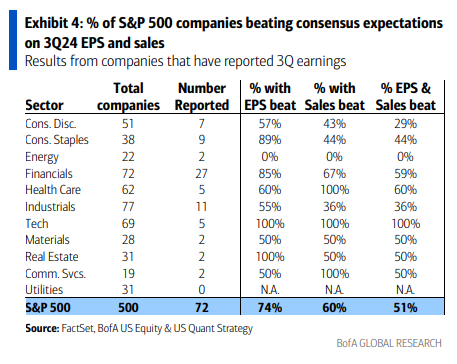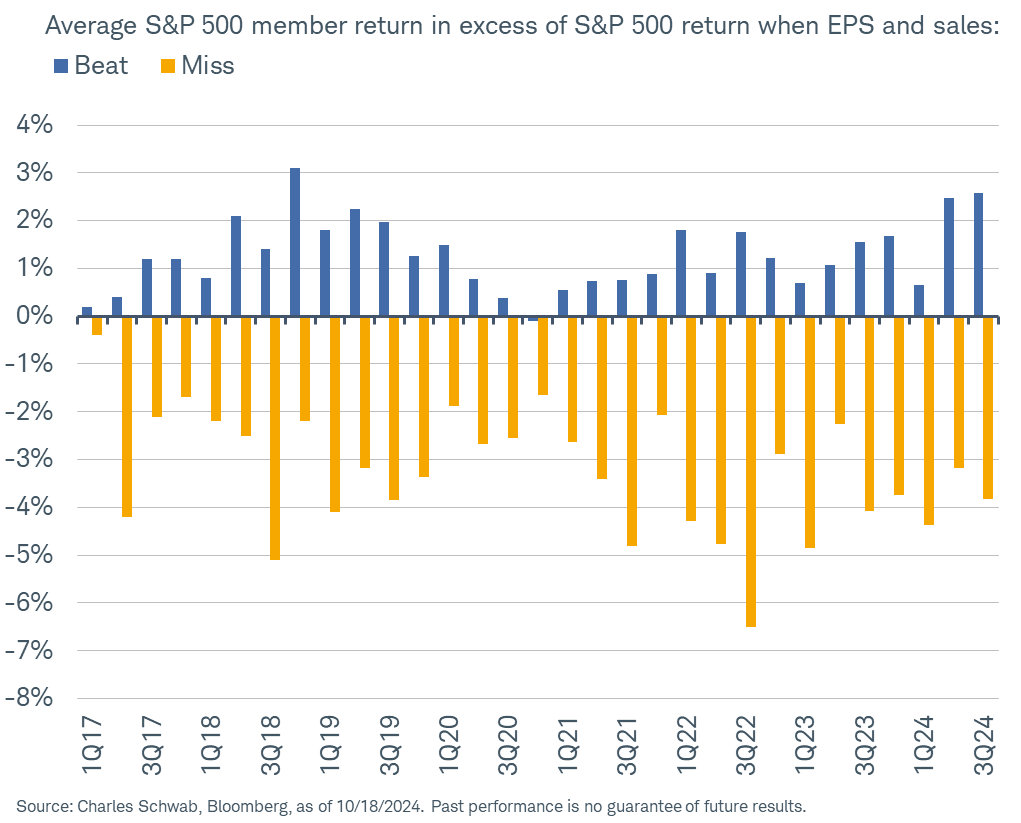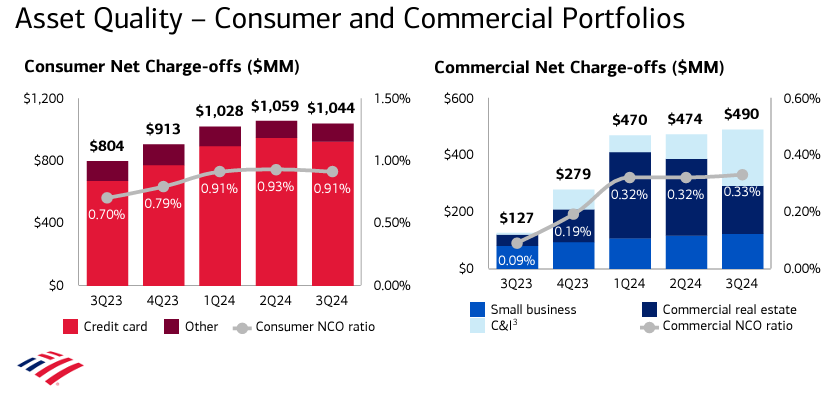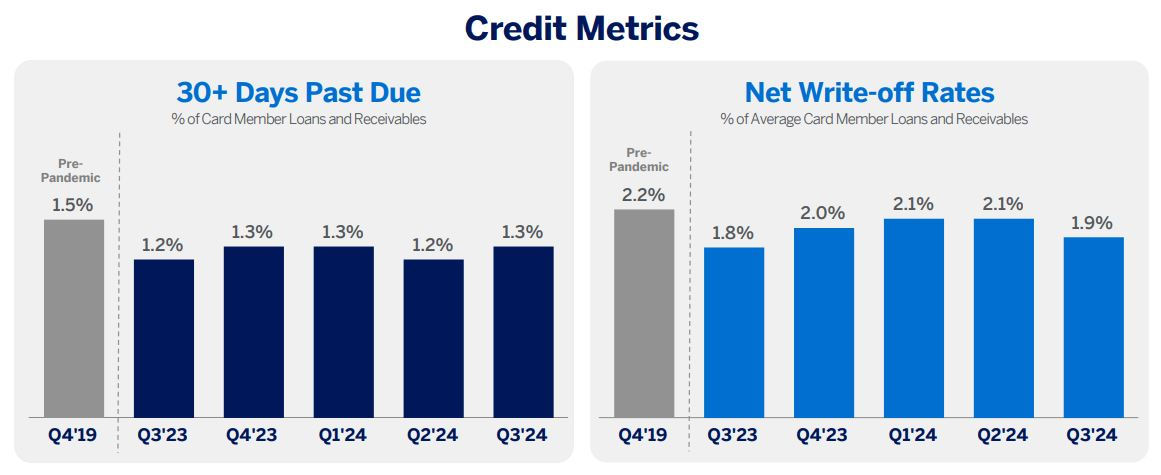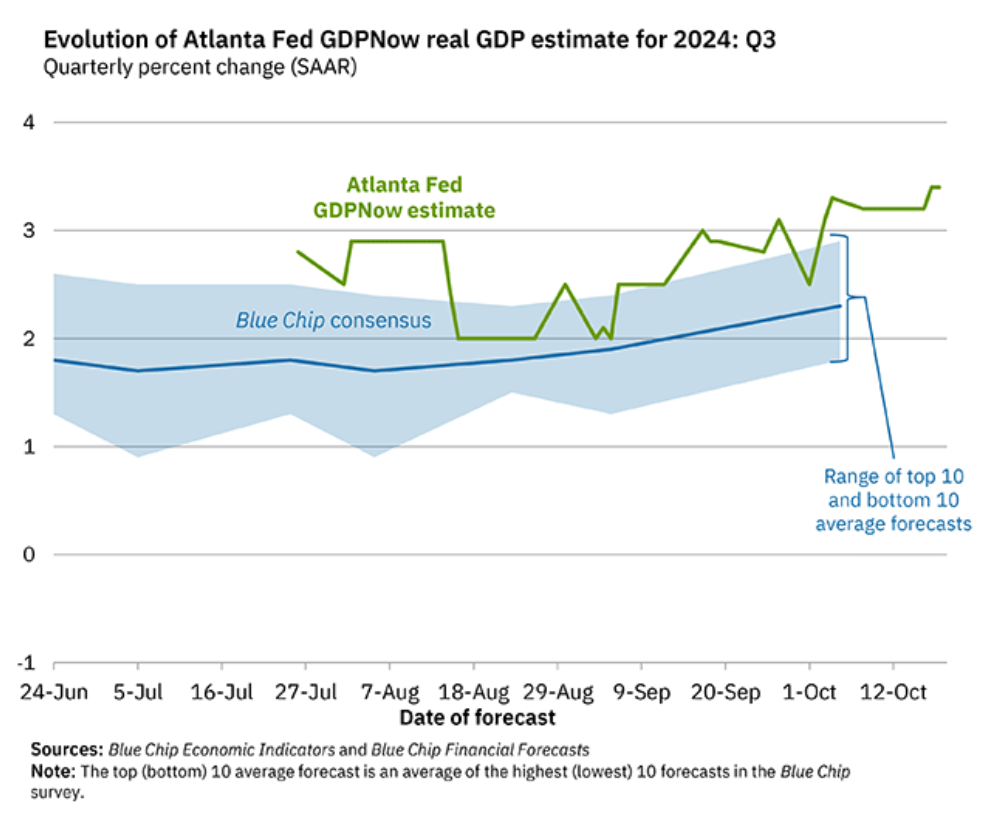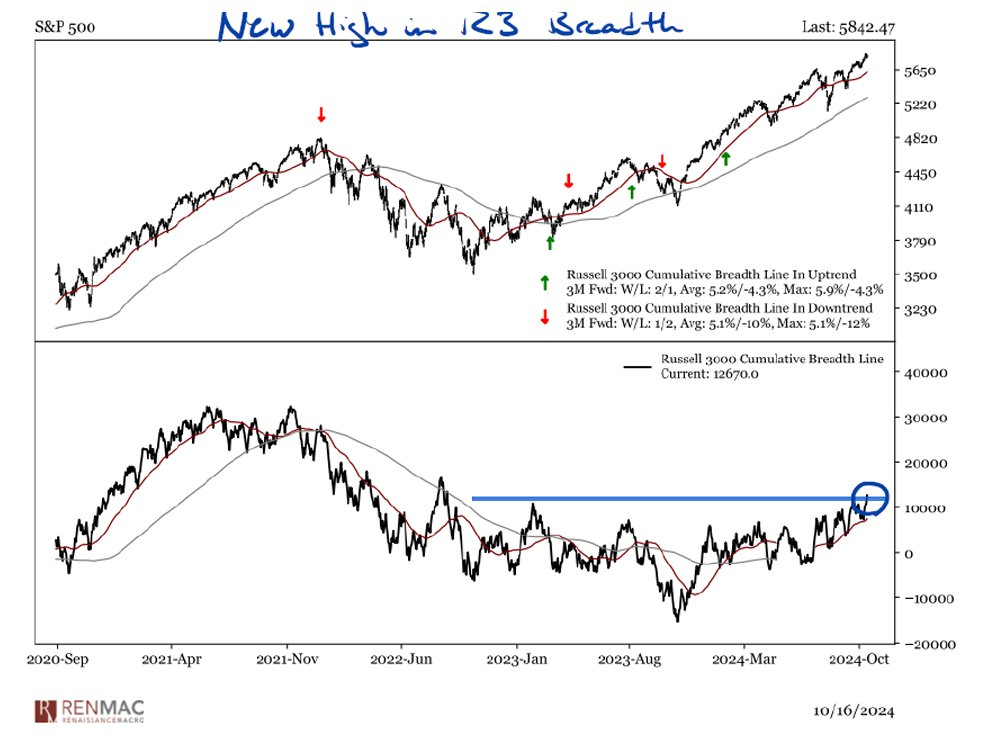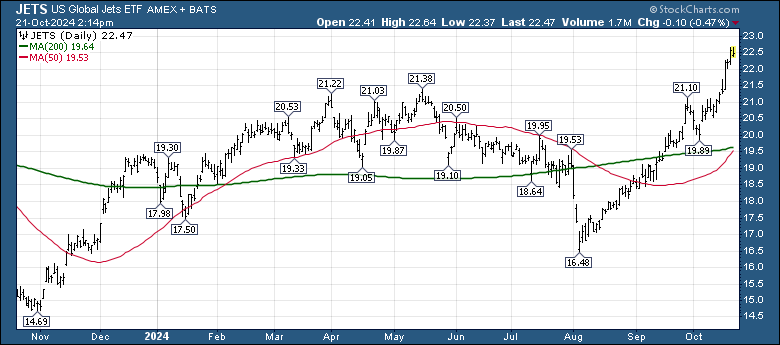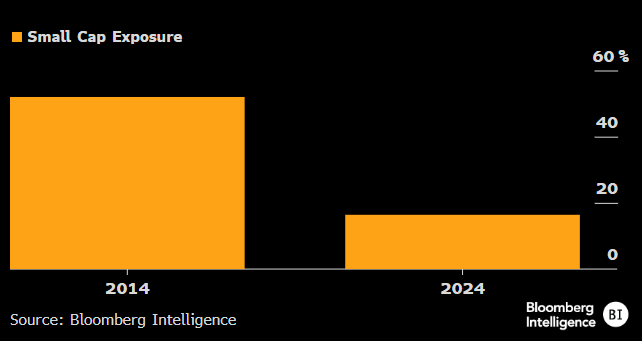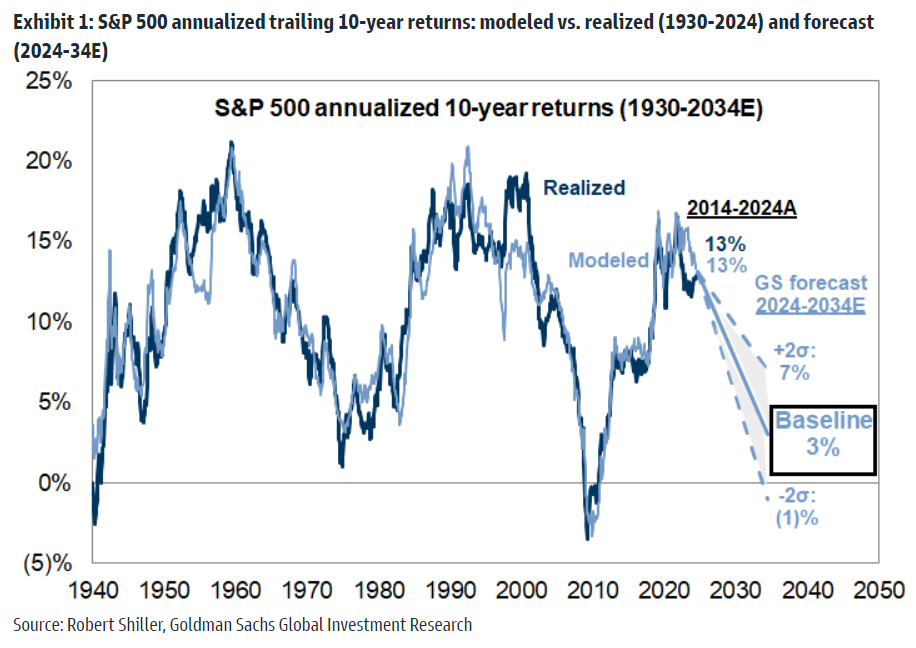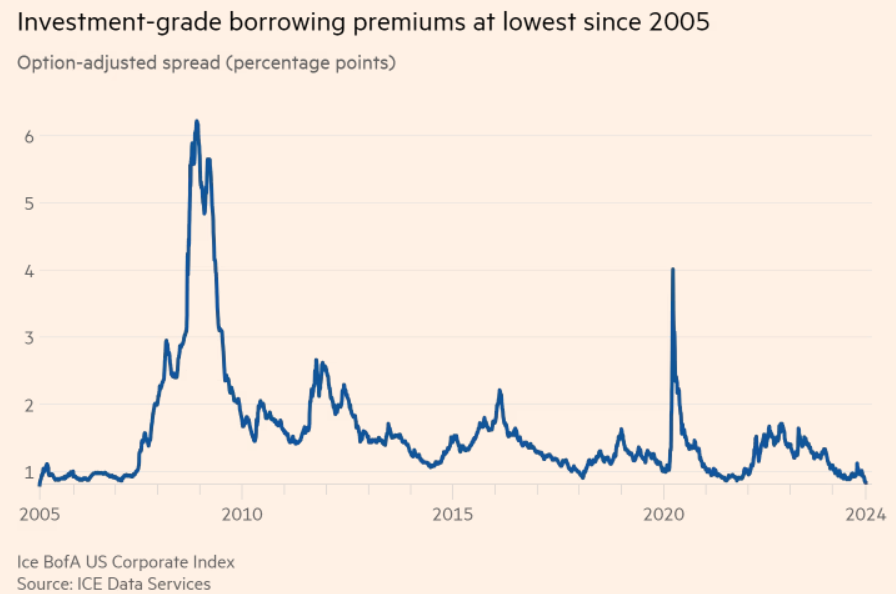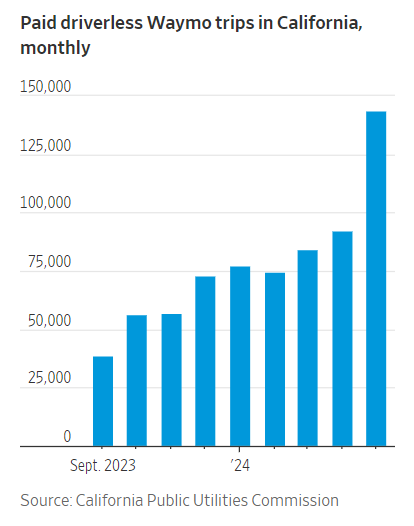
The early third quarter earnings reports have delivered solid numbers, and the beating stocks have responded with their best gains in years. This is a positive sign of a healthy financial market. Looking ahead, the mutual fund tax related selling peak will end on Halloween. Add in the return of corporate stock repurchase activity and the end of U.S. election uncertainty, and the public stock markets could be looking forward to a strong November rally. The headwinds for the bulls will be higher market valuations, and continued strong economic data leading to questions over future Fed Funds rate cuts. This week we will see over 20% of the S&P 500 reporting with little on the economic data front. Expect the occasional 'Debbie Downer' earnings report to get most of the media attention but stay focused on what the bulk of the reports are saying. Last week's clunker was ASML Holdings, but it was quickly mended by TSMC, Netflix, Intuitive Surgical, Travelers and Morgan Stanley. Let's see if this much bigger week of earnings will be a replay.
The Q3 earnings season is off to a good start...
@neilksethi: BoA (Subramanian): 72 S&P 500 companies (21% of index EPS) reported so far...74%/60%/51% of reporters beat on EPS/sales/both, well above the historical post-Week 2 average of 64%/59%/45% and similar to 73%/59%/51% at this point last quarter.
The market is rewarding positive EPS surprises more than average...
To date, the market is rewarding positive earnings surprises reported by S&P 500 companies for Q3 more than average and punishing negative earnings surprises reported by S&P 500 companies for Q3 near average levels.
Companies that have reported positive earnings surprises for Q3 2024 have seen an average price increase of +2.6% two days before the earnings release through two days after the earnings release. This percentage increase is well above the 5-year average price increase of +1.0% during this same window for companies reporting positive earnings surprises.
Companies that have reported negative earnings surprises for Q3 2024 have seen an average price decrease of -2.2% two days before the earnings release through two days after the earnings. This percentage decrease is nearly equal to the 5-year average price decrease of -2.3% during this same window for companies reporting negative earnings surprises. 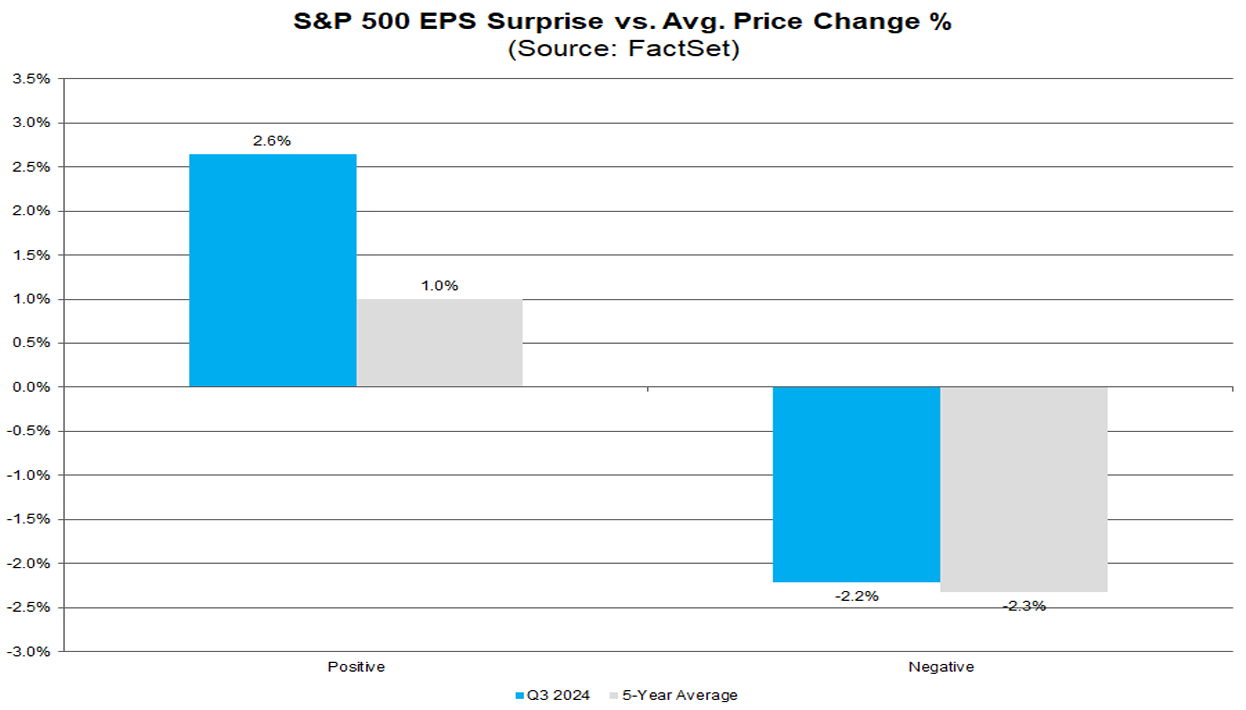
For those companies beating both sales and earnings, the stock performance is the best in six years...
@KevRGordon: Still early days in reporting season, but for S&P 500 companies beating on both sales and earnings, their return vs. the index is the strongest since 4Q2018
This week's earnings flow increases with participation from many more manufacturers... 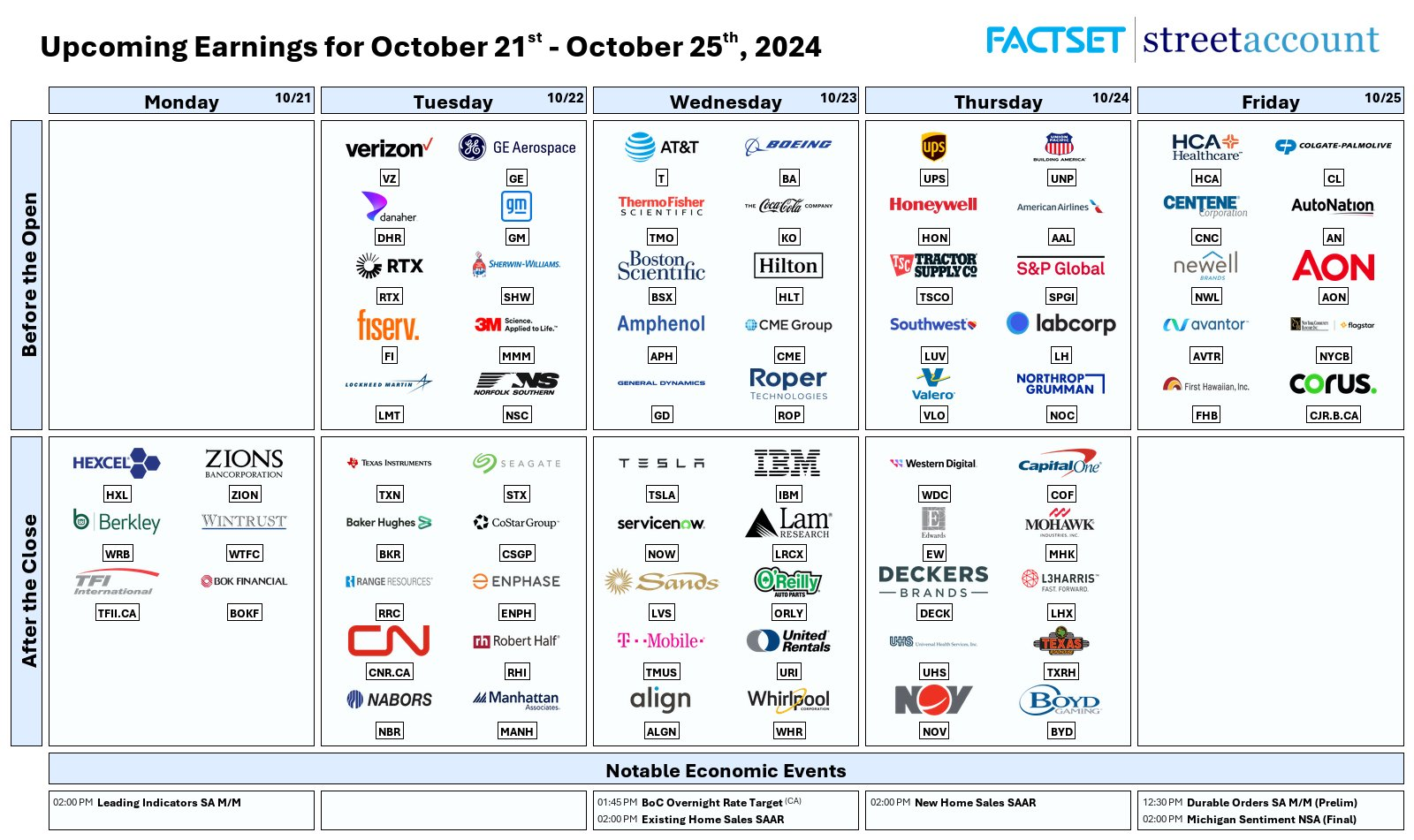
Last week's report from Taiwan Semi paints a good picture for upcoming releases from Apple and Nvidia...
Taiwan Semiconductor Manufacturing Co. shares hit a record high after the chipmaker topped quarterly estimates and raised its target for 2024 revenue growth, allaying concerns about global chip demand and the sustainability of an AI hardware boom.
The company — the main chip manufacturer for Nvidia Corp. and Apple Inc. — now expects sales to climb roughly 30% in US dollar terms this year, up from previous projections for an increase in the mid-20% range. That’s after TSMC reported better-than-predicted earnings for the September quarter. And it foresees capital expenditure rising in 2025 from roughly $30 billion this year.
TSMC’s American depositary receipts rose 9.8% in New York, reaching their highest level since the securities began trading in the US in October 1997.
Corporations continue to discuss a Fed cut on their calls and interviews...
- "Needless to say, the markets are improving. You're seeing momentum in the economy. Uncertainties are lifting. And retail clients are engaged both from seeking advice but also coming to the platform as new clients, which I think is a particularly good trend to watch." – Morgan Stanley CFO Sharon Yeshaya
- "The U.S. economy continues to be resilient. Inflation has been coming down. The recent unemployment data is supportive, while we've seen some softness in consumer behavior, the tone of my recent conversations with clients has been quite constructive. The beginning of the rate cut cycle has renewed optimism for a soft landing, which should spur increased economic activity." – The Goldman Sachs Group CEO David Solomon
- "We also stated our belief that an easing of the cost of capital would be very positive for Blackstone's asset values and would be a catalyst for transaction activity, including deployment and ultimately, realizations, which in turn fuel fundraising. This is the virtuous cycle that powers our business. We believe we're now advancing towards the stage in the cycle, it is always the most fun." – Blackstone CEO Stephen Schwarzman
- "Both our consumer and commercial customers have remained resilient... Both credit card and debit card spend were up in the third quarter from a year ago. And although the pace of growth has slowed, it is is still healthy." – Wells Fargo CEO Charlie Scharm
- "Consumers are wary of the cost of living, worried about higher rates and other matters. But overall, activity is fine. Unemployment is low and wage growth is steady, both of which bode well for the consumer overall and for consumer asset quality." – Bank of America CEO Brian Moynihan
And little sign of consumer or commercial borrowing stress at this U.S. banking leader...
Ditto for credit quality trends at American Express...
@DanGreenhaus: I get that $AXP caters to a higher income consumer so this isn't totally surprising, but there doesn't appear to be much stress here. They continue to highlight strength in the Millennial/GenZ customer and based on the stock chart, investors like what they see (in general).
Recent economic data strength causing the Atlanta Fed to lift their Q3 GDP estimate to 3.4%...
Strong corporate earnings, solid consumer and commercial credit quality, and an improving set of economic data is pushing the stock market to broaden out...
Speaking of market breadth expanding, United Airline's earnings last week showed why the airline stocks have taken flight...
A strong consumer. Full planes. Limited new plane shipments by Boeing and Airbus. Low fuel prices. Southwest and Spirit Airlines under the gun to make more money (in other words, they will be shedding unprofitable routes). Profitability is rising for this chronically unprofitable industry which is benefitting near all public stock constituents.
(StockCharts)
The best game in the last decade has been to own larger cap stocks while benchmarking against a small cap index...
@DavidCohne: Small cap managers are juicing returns with bigger stocks. The average percent of small cap stocks in active small cap growth mutual funds is only 16.4%.
Goldman Sachs is less of a fan of S&P 500 index outperformance over the next ten years...
Instead, they would prefer that you consider broader market exposure, or even other asset classes.
We estimate the S&P 500 will deliver an annualized nominal total return of 3% during the next 10 years (7th percentile since 1930) and roughly 1% on a real basis. Annualized nominal returns between -1% and +7% represents a range of likely outcomes around our baseline forecast and reflects the uncertainty inherent in forecasting the future…
Our forecast suggests equities will face stiff competition from other assets during the next decade. Our 3% annualized equity return forecast combined with a current ten-year US Treasury yield of 4% and ten-year breakeven inflation of 2.2% suggests the S&P 500 has roughly a 72% probability of trailing bonds and a 33% likelihood of lagging inflation through 2034. Excluding concentration, the probabilities of underperforming would be 7% and 1%, respectively.
Front page headline this weekend in the Financial Times was a keeper for the credit markets: "US corporate bond spreads hit 19-year low"...
The gap between corporate bond yields and US Treasuries has narrowed to its lowest in almost 20 years, as investors pile into bets on a “soft landing” for the world’s largest economy.
The spread — or additional borrowing cost — paid by investment-grade companies relative to the US government fell to just 0.83 percentage points this week, the smallest gap since March 2005.
The spread for borrowers in the high-yield or “junk”-rated bond market is now just 2.89 percentage points, according to ICE BofA data — the lowest since mid-2007.
The narrowing spreads — a proxy for the risk of default — reflect investors’ belief that the US Federal Reserve will succeed in taming inflation without triggering a recession in which some companies would struggle to repay their debt.
Healthy credit markets continue to fuel larger buyout appetites...
Neuberger Berman Private Markets formed a consortium with Swedish buyout group EQT, Canada Pension Plan Investment Board and other institutional investors to buy Nord Anglia Education in a deal that values the international schools operator at $14.5 billion...
EQT and Canada Pension Plan Investment Board are existing shareholders in the company and both will remain shareholders following Monday’s agreement, with EQT making a new investment through its BPEA Private Equity Fund VIII and Canada Pension Plan Investment Board reinvesting a portion of its stake.
Nord Anglia operates a network of more than 80 international day and boarding schools across 33 countries, educating more than 85,000 students from ages 2 to 18. Its schools offer multiple curriculums, including the English National Curriculum, the International Baccalaureate, the Swiss Maturite, and the American Curriculum.
And a Russell 2000 small cap software company is going private...
Billing software firm Zuora said on Thursday it has agreed to be acquired by buyout firm Silver Lake and Singaporean wealth fund GIC in a deal valued at $1.7 billion, sending its shares up nearly 6% in early trading.
Silver Lake and GIC will acquire all outstanding shares of Zuora's common stock at $10 a piece in cash, which represents a premium of 6.2% to its last close.
The offer price is an 18% premium to the closing price on April 16, the last trading day before Reuters first reported Zuora was exploring options after it had received acquisition interest from potential suitors.
Meanwhile, two S&P 500 companies are getting their corner offices rattled by the same activist investor...
- Activist investor Jana Partners has built a stake of roughly 5% in Lamb Weston and plans to push the struggling french-fry maker to explore a sale. The activist also wants the company to improve its operations and capital-allocation strategy, according to people familiar with the matter. Jana could nominate directors to the company’s board and is working with industry executives including Lamb Weston’s former executive chairman, Timothy McLevish.
- Activist investor Starboard Value has a sizable stake in Kenvue, the consumer-products company that makes Tylenol and Listerine, according to people familiar with the matter. Starboard wants Kenvue, which was spun out of Johnson & Johnson last year and has a market value of over $40 billion, to make changes to boost its share price, the people said. The hedge fund believes Kenvue has some of the best consumer brands in its industry yet its stock has underperformed peers and the broader market since its debut over a year ago, the people added.
Blackstone's post earnings call comments pointed to the healthy public markets leading to an uptick in their future monetizations...
Jonathan Gray, Blackstone’s president, said the recent technology-fuelled rally in global stock markets signalled a likely return of investor interest in initial public offerings. He argued that this paved the way for share sales by the group, whose global assets total $1.1tn.
“We are preparing to take some portfolio companies public . . . I would say the discussions have gone from theoretical to practical and we are talking about things like timing,” Gray told the Financial Times.
His comments apply to the bigger investments held by Blackstone, which are better suited than smaller companies to listing on public markets.
Blackstone’s investments in recent years include the acquisition of US health supplies company Medline Industries, Legoland owner Merlin Entertainments and payrolls software group UKG. It also has a $70bn portfolio of data centres and made a pre-pandemic bet on warehouses that have since soared in value.
“When you have this strong of an equity market it’s almost like a magnet pulling companies out of the private market,” Gray added, cautioning that his optimism about IPOs depended on stock markets remaining stable.
A J.P. Morgan report shows how private market evergreen funds will continue to see ongoing investment portfolio inclusion..
Investors like the risk/reward profile of the products creating rapid evergreen fund assets growth. Meanwhile, advisory firms see a sustainable and portfolio diversifying product which is more profitable for advisors to distribute than another public market beta oriented mutual fund or ETF. At Schwab, a shift in portfolio penetration to 10% could add $4 billion a year in revenues according to J.P. Morgan. This could be meaningful given that this week Schwab printed $4.85 billion in revenues just for its third quarter. Barron's has more of the details.
The firm soon plans to launch a platform with a “curated shelf of high-quality, third-partly alternative investment funds” for retail investors with more than $5 million, according to a spokesperson email.
Schwab appears poised to capitalize on the popularity of alternative assets in part because new investment vehicles have made them more accessible to individual investors. For instance, interval funds, which resemble traditional open-end mutual funds but limit investors withdrawals to a few times a year, have seen assets grow 40% a year for a decade, and now hold more than $80 billion according to a recent Morningstar report.
JPMorgan predicts Schwab will sooner or later build an alternative fund supermarket, not unlike its OneSource mutual fund supermarket that proved a smashing success a generation ago. “This was revolutionary when Schwab launched it 30ish years ago. Something similar for alternative products could be equally as revolutionary,” J.P. Morgan wrote.
The good news for Schwab shareholders is that alternative investments are far more profitable than traditional open-end mutual funds, especially since index funds and ETFs have put pressure on funds’ investment fees. In fact, J.P. Morgan estimates Schwab could charge alternative asset managers roughly twice what it charges some mutual fund firms for shelf space with Schwab.
Waymo is now driving away with the robotaxi market...
Riders love them (ask your family or friends). If the economics have turned profitable on a per car basis as some analysts have suggested, then we might have a winner for the current evolution of this business model.
SAN FRANCISCO—On a recent windy day at the Golden Gate Bridge Welcome Center, a dozen tourists snapped photos of the famous view and then turned around to record videos of the vehicles that had brought them there: Waymo self-driving cars.
Across town, near San Francisco’s Ferry Building, half a dozen driverless cars pulled up to the curb in under an hour, dropping off and picking up a mix of locals and visitors.
Downtown in the city’s financial district, Waymo’s sleek white Jaguars decked out with whirling sensors and cameras are a constant presence, zooming down the streets one after another.
Self-driving cars have won hearts and minds in the tech-forward city after a rocky start a year and a half ago. Last summer, Waymo, which is owned by Google’s parent, Alphabet, was doing 10,000 paid rides a week. By May, the number jumped to 50,000. Now, it’s more than 100,000 across Los Angeles, Phoenix and San Francisco, its largest market.
The robotaxi race is on, and Waymo is pulling ahead...
“We’ve been at this for a long time—15 years in the rearview mirror—and we’ve hit this point of acceleration,” Waymo co-CEO Tekedra Mawakana said in an interview. Waymo doesn’t publicly report financial details, including whether it’s profitable.
Waymo has added vehicles and opened its service to everyone in San Francisco this past summer—ditching a waiting list it maintained for more than two years. It now operates about 300 vehicles in San Francisco and 400 in other markets.
Learn more about the Hamilton Lane Strategies
DISCLOSURES
The author has current equity ownership in: Apple Inc., Nvidia Corp., Kenvue Inc., and J.P. Morgan Chase & Co.
The information presented here is for informational purposes only, and this document is not to be construed as an offer to sell, or the solicitation of an offer to buy, securities. Some investments are not suitable for all investors, and there can be no assurance that any investment strategy will be successful. The hyperlinks included in this message provide direct access to other Internet resources, including Web sites. While we believe this information to be from reliable sources, Hamilton Lane is not responsible for the accuracy or content of information contained in these sites. Although we make every effort to ensure these links are accurate, up to date and relevant, we cannot take responsibility for pages maintained by external providers. The views expressed by these external providers on their own Web pages or on external sites they link to are not necessarily those of Hamilton Lane.
